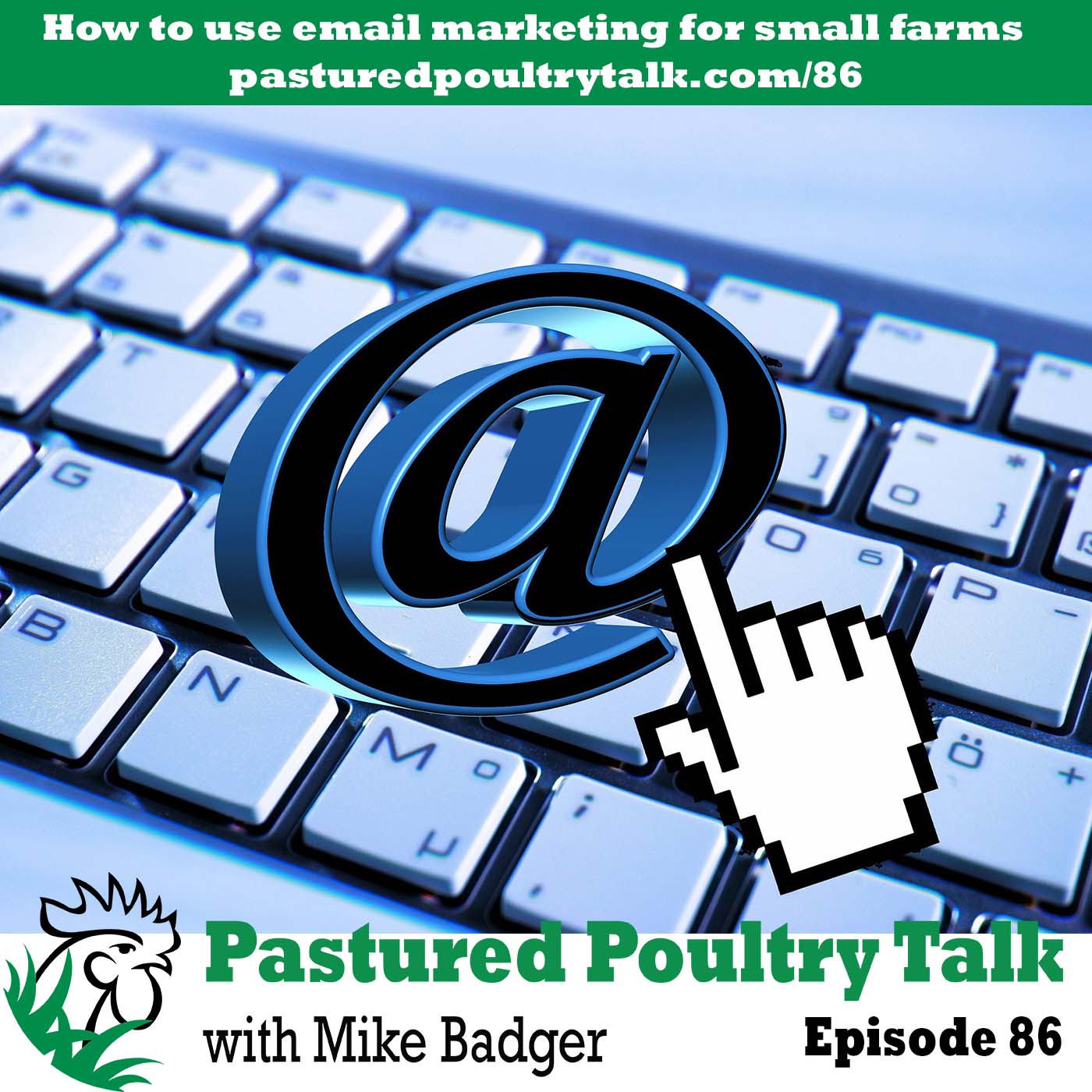
[podcast src=”https://html5-player.libsyn.com/embed/episode/id/9651854/height/90/theme/custom/thumbnail/yes/direction/forward/render-playlist/no/custom-color/88AA3C/” height=”90″ width=”100%” placement=”top” theme=”custom”] Email marketing for small farms is one of those things that people have strong opinions about. Either you recognize the value, or you have limiting belief about why you shouldn’t send email. In this episode, I take the stance that email is the second half of a technically sound marketing process, and I’ll share some basic ways you can use email to your advantage.
Email marketing for small farms is one of those things that people have strong opinions about. Either you recognize the value, or you have limiting belief about why you shouldn’t send email. In this episode, I take the stance that email is the second half of a technically sound marketing process, and I’ll share some basic ways you can use email to your advantage.
In episode 85, I talked about 10 tips to improve your farm website SEO, and the number one item was to incorporate an email marketing capture into the design of the website. Which email marketing platform you use is irrelevant to the conversation. Email is a tool. You pick tools based on how well it meets your need. If you’re just starting out, your primary criteria will likely be price, which will put you in the free version of Mailchimp, but Aweber and Constant Contact will work too.
Is email marketing dead?
The correct answer to “Is email marketing dead for your farm?” is that you spend too much time on Instagram and Facebook. Email is still the number one way for you to reach leads and talk to your customers.
Every marketer knows (or they should know), that Facebook doesn’t show your posts to everybody who is following your page. That’s not the case with email. When you send an email to your list, Mailchimp (as an example) will send the email to everyone on your list. Your email marketing platform doesn’t have an arbitrary algorithm that selects 5% or 10% of your list to get the message.
Whether or not people read your message is the real challenge. We’ll talk about copywriting in a different episode, but for now, know that people’s reading habits are just as diverse as yours. It’s unreasonable to expect that the people on your email list will read every email you send.
Email marketing is different than social media marketing
Email differs from social media in a critical way. Social media is a diversion (aka a time waster) for most people. Exceptions apply, of course. When your customers read email, they are in the mindset to get stuff done. They’re not looking to have their time wasted.
When you send an email ask yourself, “what do I want this email to accomplish?” Create the email to accomplish that goal. That means you might ask people buy and then provide the link to buy.
While the fluffy bunny pictures are great in the social feed, it’s not good email content, unless you’re explicitly asking people to buy a fluffy bunny.
If you write informational or entertaining emails, how does that tie back to the products you sell? Make it relevant and make sure the people reading know that you have a “solution” to their “problem” (e.g., a nutrition egg for people worried about their health).
Email marketing can be ineffective, but that’s a function of how you implement it. There’s a strong parallel to raising chickens. If you’re chickens don’t perform or die prematurely, it’s not the chickens fault. Email that doesn’t work is not the email’s fault.
Tips for email marketing your farm products
- Set aside time to deliberately market and write emails on a weekly or daily basis.
- An imperfect email that you send will have better results than imperfect email you don’t send.
- Your list is more responsive when you talk to them on a regular basis.
- Send emails that are relevant to the people on the list and follow the one topic per email guideline.
- Set up automatic welcome emails and onboarding series to automatically email new email list subscribers.
- Use a call to action in every email.
Email open rates are crap
Focusing on open rates is just as crazy as focusing on the number of likes. Neither an email open or a social media “like” means anything. It’s the lowest measure of engagement there is, and for email, there are technical reasons why an open may be misrepresented.
Focus on the metrics that matter. If your email is marketing your products, then make sure people know how to buy your products. Provide the link in email (or ask for a direct reply). This can be a hard sell (buy before it’s gone, gone, gone) or a subtler sell (linking the word chicken in your recipe to your order page).
Have that call to action in each email; otherwise, why are you sending the email?
The best metric to measure your farm’s email marketing is sales. Did that email generate sales or questions about sales?
Topics by timestamp
[01:34] Email as a marketing foundation
[05:17] Email addresses are assets
[07:59] I don’t have time to market
[10:40] One topic per email
[11:18] Ask for the sale
[12:35] Use email to solve problems, entertain, and inform
[19:48] Examples of automated email welcoming series
[22:59] Email open rates are crap
[29:22] Evaluating two marketing emails with different open rates


1 comment on “How to use email marketing for small farms – PPT086”